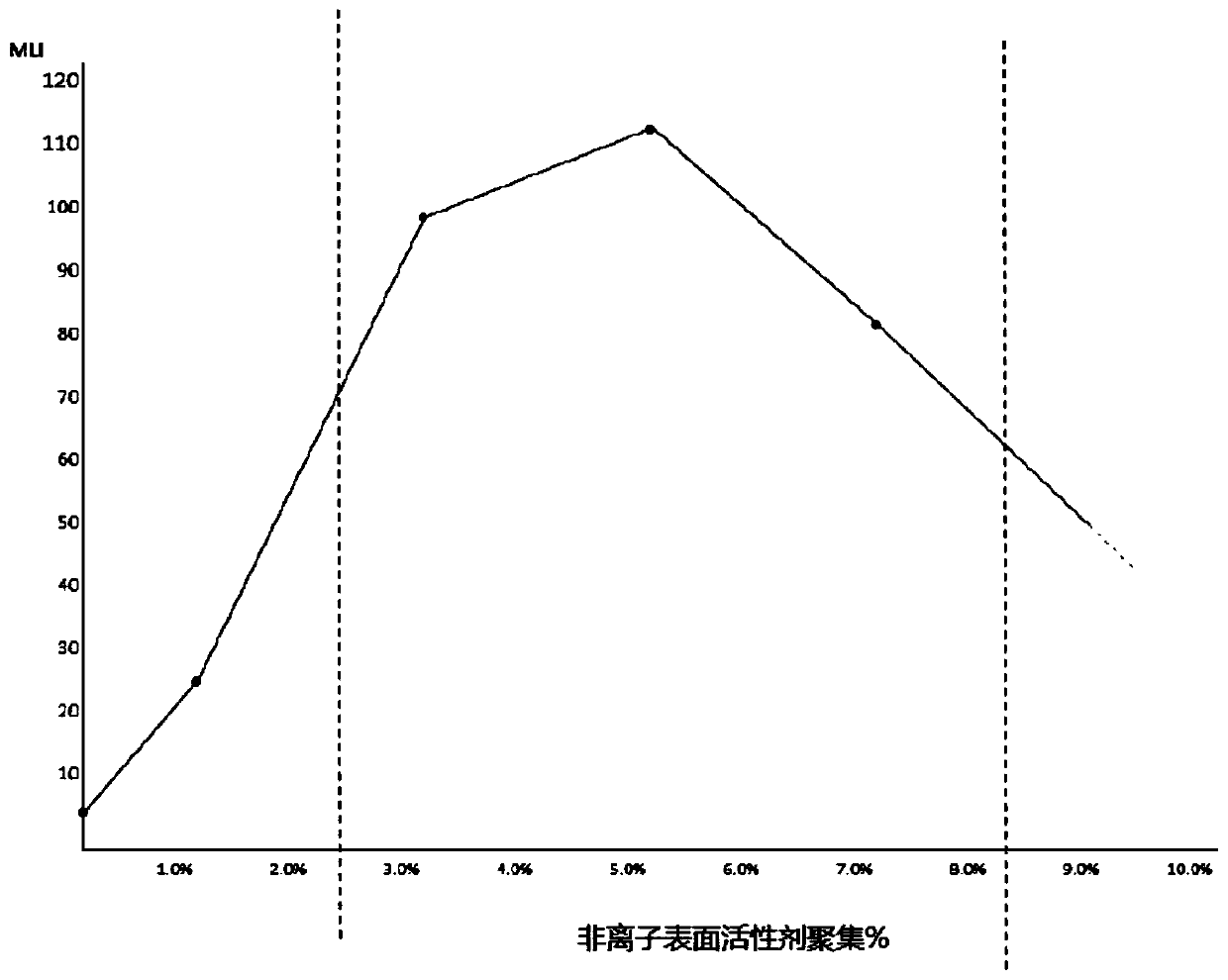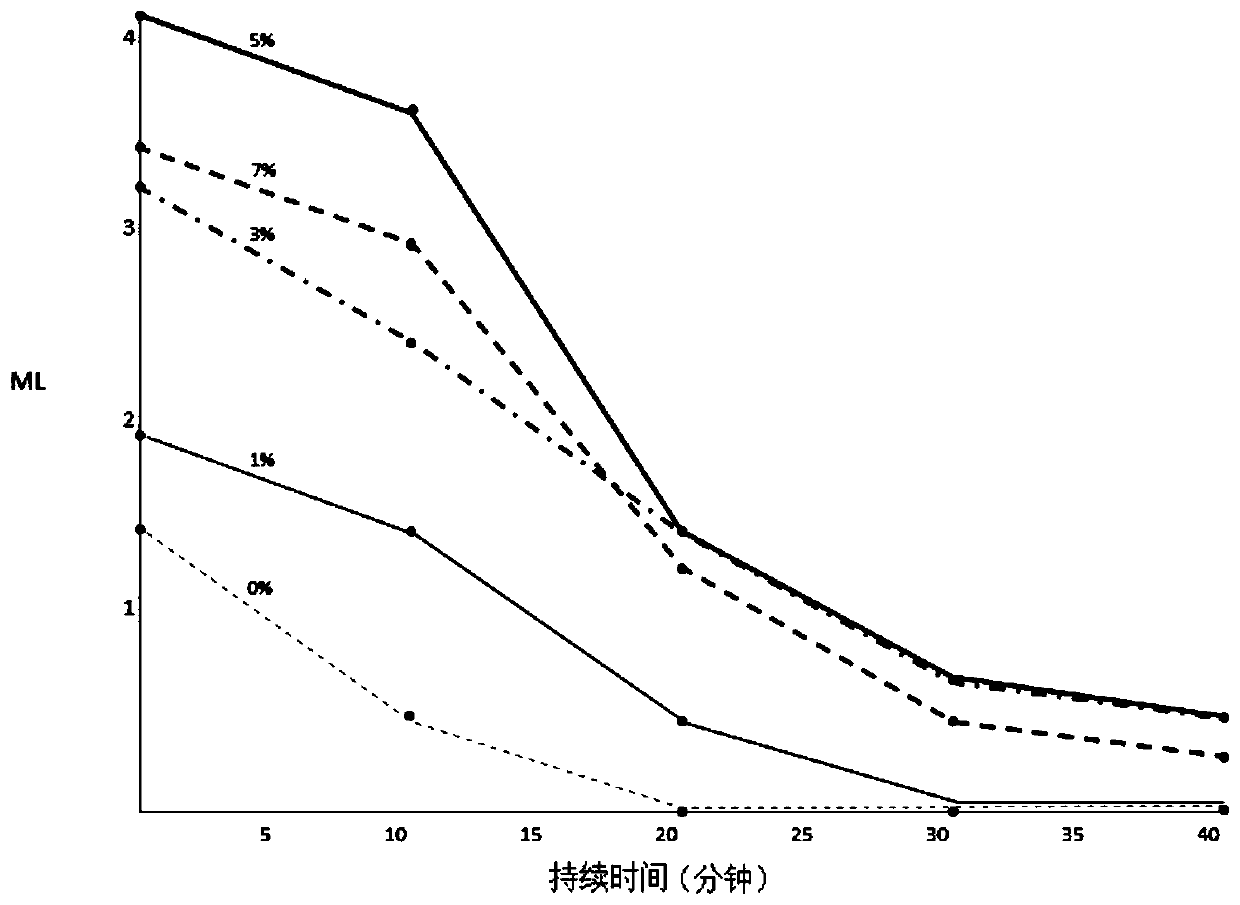Artificial tear, contact lens and drug vehicle compositions and methods of use thereof
A technology for artificial tears and compositions, which can be applied in the directions of drug combinations, lens cleaning compositions, detergent compositions, etc., and can solve problems such as drug residence time limitation and the like
- Summary
- Abstract
- Description
- Claims
- Application Information
AI Technical Summary
Problems solved by technology
Method used
Image
Examples
Embodiment 1
[0770] Example 1 - Moisture-Lock TM Effect as a function of nonionic surfactant concentration
[0771] Moisture-Lock TM by Moisture-Lock TM Index definition. Moisture-Lock TM The index is calculated by multiplying the duration of the wetting effect (in minutes) by the qualitative wetness felt along the tear meniscus of the lower eyelid, rated on a scale from 0 to 4.0, maximum, in equal increments The specific duration of the sample. Alternatively, it can be calculated by multiplying the duration of the wetting effect by the tear prism in millimeters, which yields the Moisture-Lock TM Index 2. A qualitative approach as opposed to a quantitative value is the sensation of humidity. Moisture is an accurate inference of dryness, which afflicts 10 million US citizens alone. Dryness and associated burning and irritation are the most common debilitating symptoms in most cases of dry eye. Other symptoms include reduced contrast acuity, Snellen acuity, increasing discomfort a...
Embodiment 2
[0780] Example 2 - Moisture-Lock after Induction of Tears TM effect
[0781] The following experiments were performed to test the enhanced Moisture-Lock of the compositions of the present invention inducing tears TM effect. Measuring Moisture-Lock TM The effect was as an increase in the duration of sensation of moisture and compared with control artificial tears ( XP) for comparison. 2 drops containing 1.5% w / v polysorbate, 0.20% w / v poloxamer 407, 1.0% w / v poloxamer 188, 1.0% w / v hydroxypropyl gamma-cyclodextrin; 2.5% w / v Mannitol; 0.10% w / v MgCl 2 1.30% w / v hydroxypropyl methylcellulose, 0.45% w / v NaCl, 3 mM citrate buffer; 0.07 mM menthol at a pH of 5.5 ("composition S2-2" ) instilled into one eye of the first patient. 2 drops XP was instilled in one eye of the second patient. Moisture quantification is 1-4, with an interval of 5 minutes, and an interval of 5 to 50 minutes. The results can be seen in Table 12 below.
[0782] Table 12: Moisture sensation after...
Embodiment 3
[0785] Example 3 - Enhanced Comfort and Initial Instillation Quality
[0786] Composition X:
[0787] 3.00% Polysorbate 80
[0788] 0.10% Poloxamer 188
[0789] 0.01% polyoxyethylene castor oil
[0790] 0.50%HPMC
[0791] 2.50% Mannitol
[0792] 0.10% MgCl 2
[0793] 0.75% NaCl
[0794] 3mM Phosphate Buffer
[0795] pH 7.00
[0796] method
[0797] Apply one drop of Composition X to the right eye and one drop of Refresh Apply to left eye. After 30 minutes, the qualitative tear breakup time was calculated. Qualitative tests are considered more meaningful in assessing clinical benefit, since observing and measuring quantities often requires the addition of stains such as fluorescein. Additionally, the purpose of measuring tear breakup is to assess when the tear film breaks down and begins to form degranulation (dry spots). The test is based on a) the onset of stinging and b) onset of reflex tear versus time without blinking. Post-instillation blurred vision was...
PUM
| Property | Measurement | Unit |
|---|---|---|
| osmolarity | aaaaa | aaaaa |
| osmolarity | aaaaa | aaaaa |
| diameter | aaaaa | aaaaa |
Abstract
Description
Claims
Application Information
 Login to View More
Login to View More - R&D
- Intellectual Property
- Life Sciences
- Materials
- Tech Scout
- Unparalleled Data Quality
- Higher Quality Content
- 60% Fewer Hallucinations
Browse by: Latest US Patents, China's latest patents, Technical Efficacy Thesaurus, Application Domain, Technology Topic, Popular Technical Reports.
© 2025 PatSnap. All rights reserved.Legal|Privacy policy|Modern Slavery Act Transparency Statement|Sitemap|About US| Contact US: help@patsnap.com



